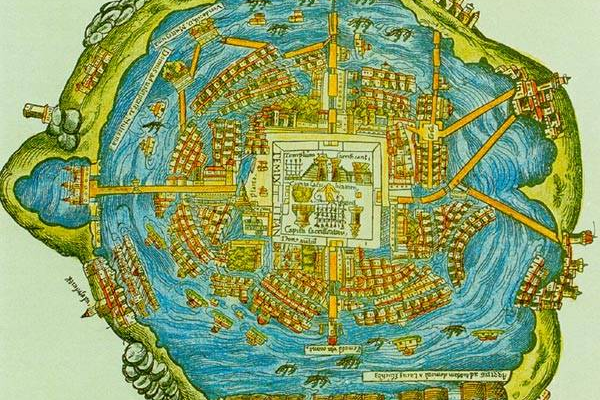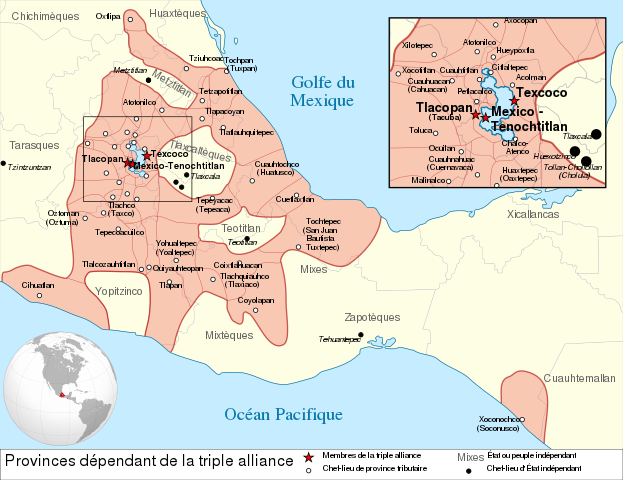The Aztec Empire mostly flourished between 1345 and 1521 CE up until the Spanish Conquistador Cortez arrived with his army. At its greatest height, their Empire covered most of northern Mesoamerica. Aztec warriors were able to dominate their neighboring states and permit rulers such as Motezuma to impose Aztec cultural influences all across Mexico. The Aztec's were highly skilled in agriculture and trade. As their reign ended with the Spanish conquest, they were the last culture to leave their mark in Mesoamerican for their exceptional art, architecture and engineering. It is considered among the finest ever produced on the North American continent.
The Aztec state was very unique. Despite destruction of many elements of their cultural identity by the Spanish Conquistadors, The Aztec are the most well-documented Mesoamerican civilization. Through sources including archaeology, native books (codices) and detailed accounts from Spanish Catholic clergy. Much of the Aztec governing institutions, religious practices, warfare techniques and daily life is well ducumented. As part of their history, near 1100 CE, the small city-states that were spread over central Mexico began to compete with each other for local resources and regional dominance. During this time, each city-state had its own ruler who led a council of nobles. After a while, these small urban centers sought to expand their wealth and influence. By 1400 CE, several small empires had formed in the Valley of Mexico. The most dominant of these smaller empires were the Texcoco and Azcapotzalco. These two empires came face to face in 1428 CE in a series of battles that made up the Tepanec War. The Azcapotzalco army were defeated by an alliance of Texcoco, Tenochtitlan (futue capital and Aztecs and to eventually become modern day Mexico City) and several other smaller cities. Following the victory, a "Triple Alliance" was formed between Texcoco, Tenochtitlan and Tlacopan. A campaign of territorial expansion began where tributes (payment of crops and goods) came from recently conquered (and acquired) smaller tribes. The tributes were shared between the three great cities. Over time, as the three empires grew, Tenochtitlan became to dominate member. As a result, its ruler became the supreme ruler of the "Triple Alliance", and Mexico City (Tenochtitlan) itself became the capital of the Aztec empire.
Before conquest, the city of Tenochtitlan was an amazing wonder to behold. It sat on an island in the middle of a huge lake. Several bridges lead to the city center from the banks of the lake. Farms of argiculture and aquaculture circled the entire city (see map below). The empire continued to expand from 1430 CE onward as the Aztec military (enlarged by conscription of all adult males, men supplied from allied and conquered states), conquered more and more rivals. Aztec warriors wore padded cotton armor, carried a wooden or reed shield covered in thick animal hides They wielded weapons such as a super sharp obsidian blade covered sword, a dart thrower called the atlatl, and bow and arrows. Elite warriors also wore feathered helmets and animal skin costumes. They had different types of headdresses to signify their rank. Battles were concentrated in or around major cities were they could claim the whole surrounding territory upon victory. Regular tributes were extracted and captives were taken back to Tenochtitlan for ritual sacrifice. In this way, the Aztec empire came to cover most of northern Mexico. Up until Spanish conquest, the empire was kept together through the strategic appointment of governing of officials decreed by Tenochtitlan, the building of monuments and artworks which promoted Aztec imperial ideology and the continuous threat of military intervention. The map below was drawn by Cortez upon his arrival in Tenochtitlan in 1519.

